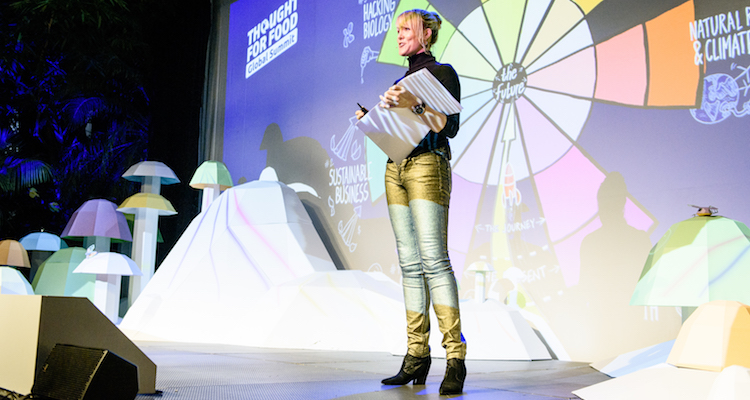Sixty years ago I was where you graduates are now, but graduating from the University of Toronto. By the time I got my PhD a few years later, I was well launched on a goal to understand population processes. It was the unknown that beckoned me and simple curiosity that motivated me.
The goal was to develop suites of models and experiments that could yield explanations and understanding that were simultaneously precise, realistic, holistic and general. For that time, just before computers became available, that was viewed as being unnecessarily complex. After all, one distinguished ecologist asked me, if you are interested in the time a ball takes rolling downhill, why worry about anything more than the height of the hill and its slope? General laws of physics will provide the answer.
But I was stubbornly curious about the path down the hill, the bumps and valleys that the ball might encounter and the momentary pauses as the ball encountered, or even, over several runs, created a shallow valley. That led to really delightful experimental studies of predators and prey leading to generalized models and sudden discoveries from them. The beasts used in the experiments depended on the question of the moment – Preying Mantis, deer mice, shrews, then birds, fish and stalking lions. The early computers and languages like Fortran suddenly provided the language that could use the experimental and field results. Models plus reality combined to yield broadened, generalized understanding of a small number of classes of predation.
That is when I discovered multi-stable states – population systems were not driven only by attraction to a single equilibrium state but, instead, there were several equilibrium states that determined their existence. And the goal for understanding and managing living resources and their physical world, was not sustainability but simple persistence. I learned, for example, that we could have detected and averted a collapse of cod populations off Newfoundland, avoiding the social and economic upheaval that in fact occurred. Or, we could have anticipated and avoided a western sub-continental outbreak of bark beetles that are now destroying stands of lodge pole pine throughout British Columbia and Alberta. Both of these examples were dominantly caused by the slow consequence of earlier development and exploitation, by the ingenious, but myopic foraging of fishers and harvesters, and by decades long fire protection policies.
Those slowly and invisibly led to reduced resilience, poising the systems on the edge of an instability state which began to unravel in a stutter of local spatial collapses and outbreaks, each stutter hidden by fast and innovative fishers and tree harvesters, until the whole system followed the stutters and collapsed at all scales.
That has forced a new paradigm that led to theories of resilience, to adaptive complex systems, to integration across scales from fast and small to very slow and big– from the needles of trees over months, to the boreal forest over millennia, That new resilience paradigm led to management of resources that was adaptive, where the unknown was large, alternatives could be proposed and monitoring was essential.
That is all part of complex adaptive system theory. It reflects humanity’s partial knowledge, fast inventions for dealing with surprises, and persistent learning.
It applies to the present turbulence in the world now. Slow economic processes have led us to the big surprises now appearing on a global scale. Financial collapse, debts threatening nations, European deep instability, and climate change.
Since the Berlin Wall fell, and the Soviet Union collapsed, corporations began to focus on fast economic variables and on globalization. That led to an emphasis on expanding efficiency but also to the emergence of slowly increasing debt, and hidden forces caused by diversified, subdivided and fragmented investments. No one knew where they were, or what they cost. That eventually triggered a collapse that exposed the reality that slow, invisible changes had decreased the resilience of the world economy. Globalization spread the collapse. What was presumed to be efficient began to be realized as being myopic.
At this turbulent time of crises, you and I have a real purpose. We need to help minimize and slow the spread of the collapses in the face of resistance from lobbies and from accumulated wealth.
Banks and investment firms need regulation and a richer paradigm, but that need is opposed by the entrenched powers of corporations and banks that are caught in a rigidity trap. Nations of the European Union, and the Euro, need an integrated, multi-scalar inter-relationship, but one that now encounters the loss of resilience that comes in part from the inability to devalue a single nation’s currency and little control on debt inflamed growth. Carbon dioxide emissions need to be inhibited, but that encounters the opposition from the fossil fuel corporations- particularly oil.
Our aboriginal cultures and small communities here on the west coast are discovering and protecting treasured histories and traditions of local cultures. They now need to also add and create novel new ways to see and act beyond their traditional scales at the mouths of rivers and to connect to others across scales. Does fear stop them? Could their traditional theory (and myths) combine with adaptive resilience theory (and myths) as an emerging synthesis?
The answer is to keep trying, keep talking, keep communicating, but recognize it is a frustratingly slow process. Understand the traps- poverty traps like Haiti, rigidity traps like Fascism, lock-in traps of mega agriculture, and gilded traps from external subsidies.
And here is a program specifically for you. Encourage and support experiments, a multiplicity of experiments that search for and deepen new paradigms. Be entrepreneurs, alone and cooperatively together. And make the experiments global and cross scale. The internet and its novel ways of helping people to interact lets us reach or create groups of participants independent of where they live, ones from multiple patches and multiple time senses.
Many experiments will fail, but make them safe in their failure. Look for rare synergisms between a few successes. When enough people and experiences have accumulated, then protest publicly, non-violently and simultaneously against the defenders of the old paradigm that created the crash, the flip.
Make it our Big Arab Spring.




